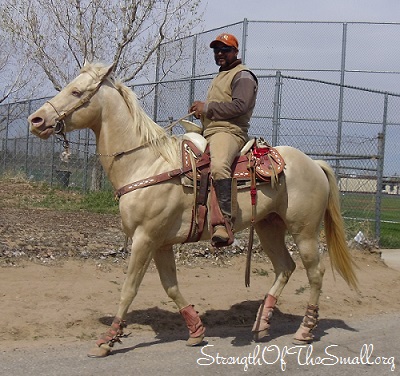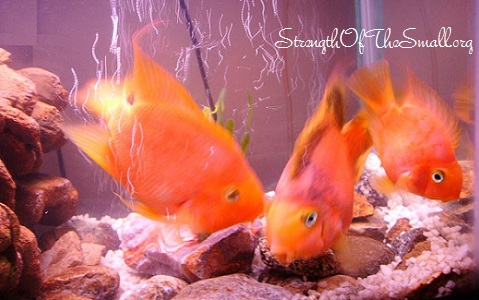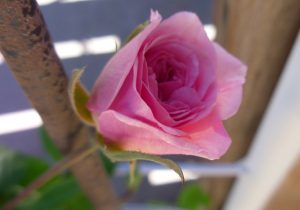Have you awaken in the morning to find dead plants around your home (plants which are leaning on their side). When we look around without seeing any evidence of burrowing rodents (such as the appearance of tunnels and exit holes with mounds of dirt around it), we simply put the blame on White Curl Grubs, which are known to eat plants roots and kill the whole plant in the process.
Pocket Gophers, Groundhogs, Badgers, Voles, Prairie Dogs, Muskrats, Moles, Ground Squirrel, just to name a few are to blame. These animals are highly active during Spring and live underground using tunnels to get to their food source. They damage lawns, plants, vegetable gardens, foundation walls and give an ugly appearance to landscaped areas. Muskrats can be found around swamps, lakes and streams with vegetation at close proximity. They feed on plant roots, stems, bulbs, grass, tender bark of young trees, nuts, seeds and fruits. Some feed on mussels, crustaceans, insects, fish, earthworms, snails and slugs.
For the past six years, we’ve only had to deal with Gophers mostly and Ground squirrels.
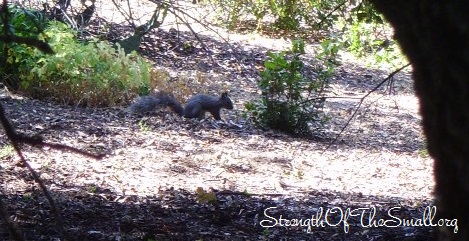
Ground squirrels are highly active during the day and thanks to sunny days and warm weather, we are constantly having uninvited guests. Fortunately for us and unfortunately for them, we wrapped chicken wire around our plants last years, protecting the plants we know for sure they love. Every now and then, I will catch a glimpse of a squirrel searching for food in the empty lot behind our Home.
Just like Yersinia Pseudotuberculosis in Rabbits which is transferable to Humans, Ground squirrels can harbor diseases harmful to humans such as bubonic plague which is transmitted to humans by fleas that the squirrels carry (killing about two-thirds of infected humans within 4 days without treatment). It is highly advised to use extreme caution when disposing a dead squirrel or notify public health officials.
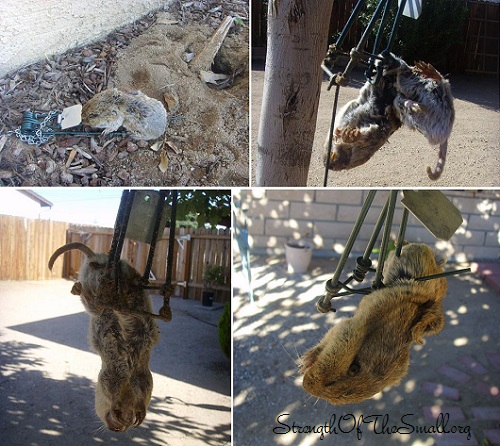
We spent our first three years in the High Desert hunting Pocket Gophers after they nearly destroyed all of our plants. We’ve seen a couple of holes in the backyard with mounds of dirt around them. This afternoon I found a hole around our Agapanthus plants and I used a shovel to destroy the hole. These vertebrates will destroy anything on their path while creating holes leading them to their desirable food source. They are also capable of destroying irrigation lines and buried utility cables which are not properly protected.
Click here and here to learn about trapping Gophers.
How Can You Control Rodents?
They are so many options available out there. We’ve tried Gopher Gassers, Gopher Probe and poisons, none of which worked. The best and only method which has worked for us is traps with snapping latch placed near an opening (the latch is triggered when the animal steps on the trap) as you can see on the picture above. Some of these traps can be purchased at your local hardware stores and they can be hand made as well.
How Can You Protect Your Plants?
- Use Raised Garden Beds
- Raise your Planters/Pots (using pedestals or whatever you can think of)
- Use Chicken Wire around your most cherished plants
- Use Chicken Wire to protect the base of your plants (the roots) before planting them
Regardless of which rodents you are dealing with, always remember to be cautious around them.
